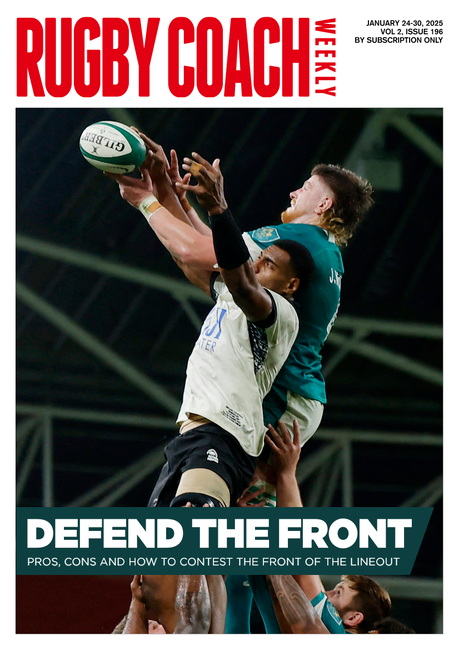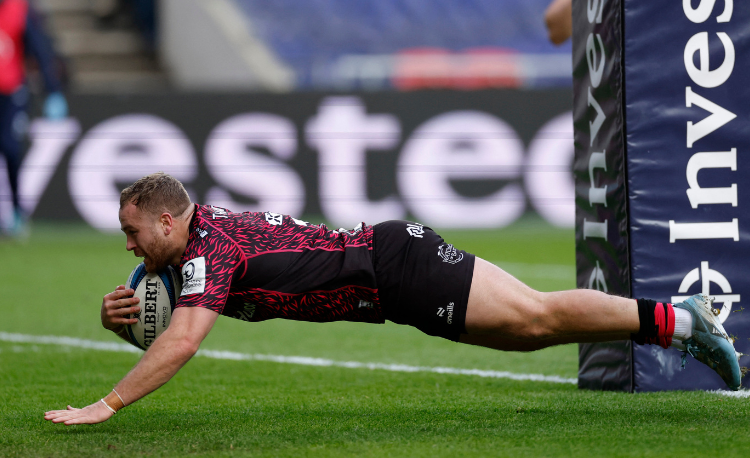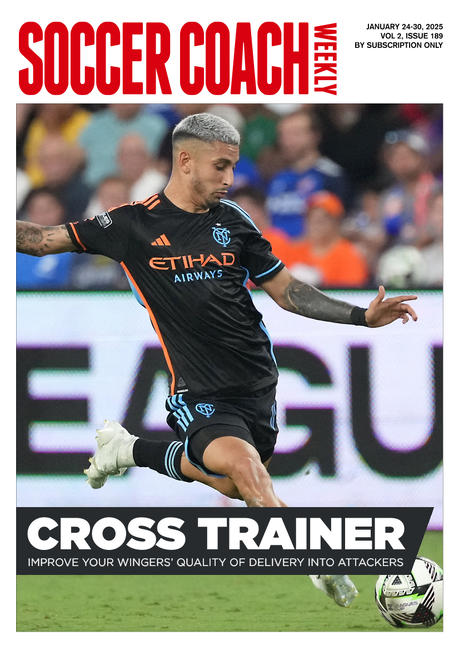Practise set-piece horrors
RCW editor Dan Cottrell adds more context to two practices.
It might seem odd to practise for something that goes wrong, especially if you usually plan for perfection. But it is a reality of the game that a set-piece might not function sometimes.
That might be because the opposition have the voodoo sign over you, or they are just better, or bigger.
This practice, Backwards set piece, looks at some simple recovery strategies. It mainly involves one player retaining the ball, staying strong and then their team-mates backing them up.
The skills used in this session are really tested to the full, because players are running back to recover and, therefore, will have to work harder to win back or protect the ball.
The former England coach Eddie Jones was a master of set-piece recovery when he worked with Japan. They worked on strategies to win the ball, but also how to deal with times when they were in less control than they wanted to be.
Much of the session I have written focuses on techniques for a specific circumstance. The problem is, the players know in advance they are going to use them, so start to prepare themselves mentally to employ the right skills.
So, while it’s good to develop recovery tactics, and what to do next, it doesn’t help the players react any quicker if the set-piece does go wrong.
I’ve used this session quite early on in the training cycle, though probably not in pre-season. Once the season is in progress, though, it’s a great time to focus on what happens when things go wrong.
Now, when you are running the set-piece section of your training, you can throw in various scenarios where the players know they might have to adjust because the ball has been disrupted.
Ways to challenge the players
- In the middle of another section of the session, call out that the players have 15 seconds to set up a set-piece play. They run to a designated point on the pitch, prepare themselves for the set-piece and then execute it. If it works out, brilliant. If not, they still have to play on. If you can introduce an opposition, even better. Next time you stop the normal session, it’s their turn to have a go.
- Split your set-piece training session in thirds. The first third is purely technical; the second is running through the plays for the weekend; the last third is competitive, with players reacting to winning good or poor ball. In the first, technical, section, you make sure the players’ techniques are solid. In the second section, you might introduce a new play. The last section has to be pressurised. Either you put in some opposition, or you challenge the players to execute, say, five different set pieces, but with no chance to go back to them if they don’t work out.
Lineout imperfections
The picture above, taken back in 2016, shows Jonny Hill, then of Exeter, being challenged by Bath’s now-retired Dave Attwood.
What happened next? Attwood failed to disrupt the catch, but he came very close.
In training, we tend to focus on one outcome, which, in this case, would probably be Hill winning the ball cleanly and popping it down for a catch-and-drive, or to his scrum-half.
If it doesn’t happen that way in our training run, we reset and try again. Yet, although teams might reckon to win more than half of their own lineout, how clean is that win? And how do they adjust if it’s messy?
You need to go through all the possible outcomes from both an attacking and defensive point of view.
For example, in attack, and assuming this ball is won in the middle of the lineout, a defensive jump to challenge gives you more attacking options, if you win the ball.
Even if the catch is slightly disrupted, three opposition players are not set to come forward out of the line, because they have been involved in the lift-and-jump sequence.
Your team might still be able to drive through the lineout, attack the edge of it or go into the midfield.
From a defensive point of view, there’s a risk and reward from going for an interception. What happens if the attacking team win clean ball? What happens if it’s disrupted?
Firstly, you should think about the movements of the players not involved in the lift-and-jump. Secondly, the three who did attempt to intercept should consider whether to chase to the near or far side of the next ruck.
The session Lineout: good and bad helps players start to react correctly to these possible outcomes and set themselves for the next phase.
Related Files
Newsletter Sign Up
Coaches Testimonials

Gerald Kearney, Downtown Las Vegas Soccer Club

Paul Butler, Florida, USA

Rick Shields, Springboro, USA

Tony Green, Pierrefonds Titans, Quebec, Canada
Subscribe Today
Be a more effective, more successful rugby coach
In a recent survey 89% of subscribers said Rugby Coach Weekly makes them more confident, 91% said Rugby Coach Weekly makes them a more effective coach and 93% said Rugby Coach Weekly makes them more inspired.
Get Weekly Inspiration
All the latest techniques and approaches
Rugby Coach Weekly offers proven and easy to use rugby drills, coaching sessions, practice plans, small-sided games, warm-ups, training tips and advice.
We've been at the cutting edge of rugby coaching since we launched in 2005, creating resources for the grassroots youth coach, following best practice from around the world and insights from the professional game.










